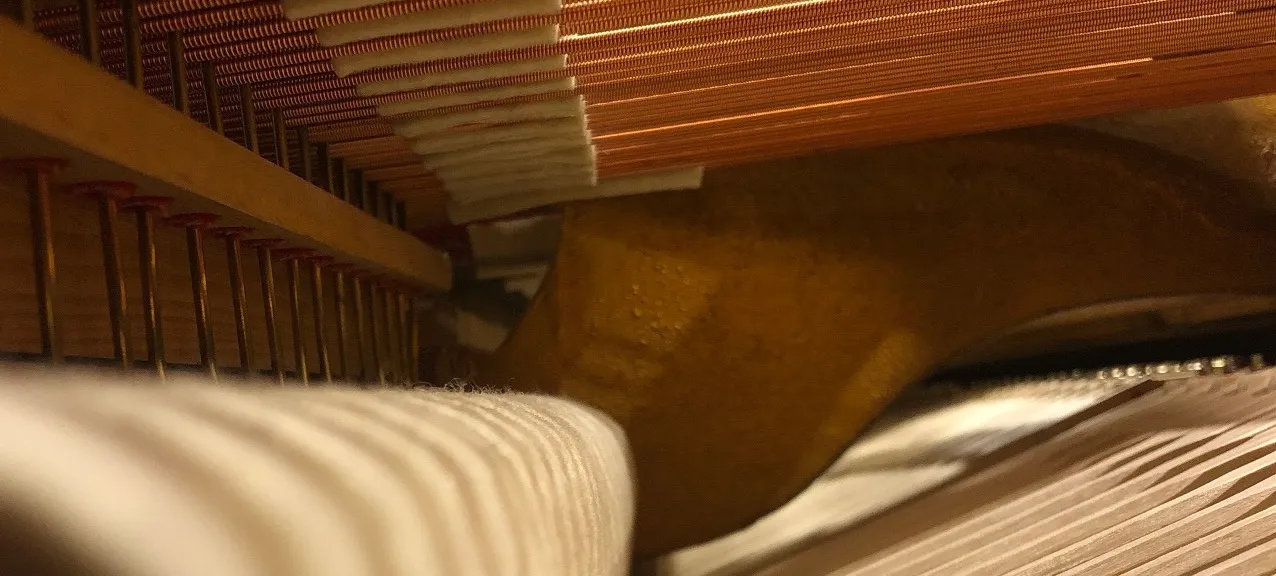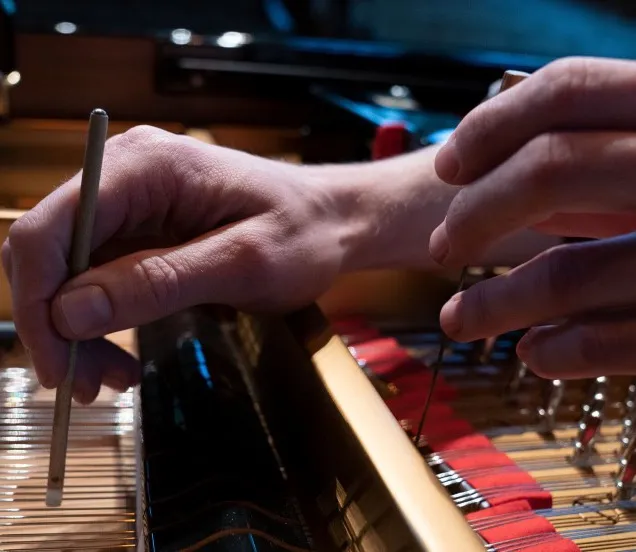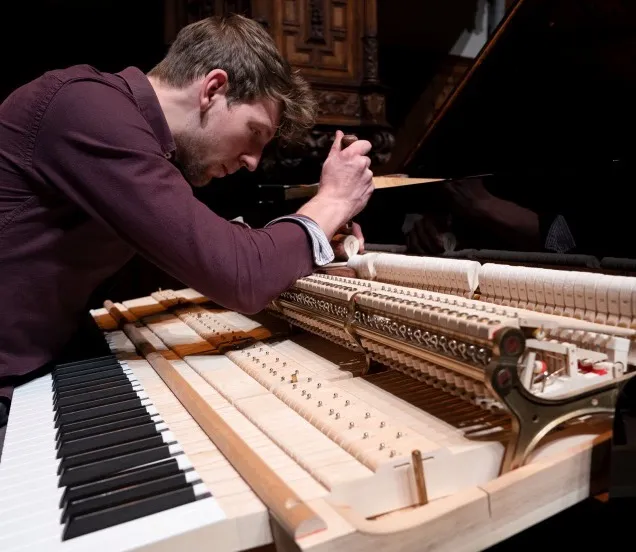Voicing: editing the sound
If the piano or grand piano does not sound very nice but it is technically in order, what can be done about it? Voicing!


Harmonisation
It is a tricky subject with a large grey area. How does it come about? What is intonation anyway? Described as briefly as possible: changing or influencing the tone and sound colour. In our blog about the sound of a piano, you can read more about what sounds a piano or grand piano can have.
Changing the tone and dynamic
Everything in a piano or grand piano contributes to the sound, even the furniture! Tuning is only done when everything is technically in order. This is because everything affects the sound. The instrument must be tuned optimally.
If everything is in order, the technician starts the intonation. You can compare it a bit with making a film. First you write a script, look for actors, find the right music, record everything and when everything is done: the editing. With the editing of the film, you can determine what the film will eventually look like.
So, in fact, intonation is the editing of the sound, timbre and dynamics of a piano or grand piano!

How does a technician intonate?
Since intonation consists of several parts, here is a step-by-step explanation of what is involved in this process.
Scheitelen (shjeitelen)
A German word. This is an operation in which the technician makes sure the head hits the strings perfectly straight. Sometimes a hammer head hits the strings (excessively) skewed. This results in unwanted noises. An example: if you walk in a pair of shoes where your right shoe is three millimetres lower than your left shoe, you will notice this.
Tuning
After the shuffling, the technician retunes the sound again. Then you will get an exact idea of how the piano or grand piano sounds.

Changing the tension of hammer heads
A hammer head is covered with felt that is glued under high tension. So there is a lot of tension on a hammer head, which has a great influence on the dynamics, hardness and timbre of the tone. If the tension of a hammer head is very high, you get a bright or brighter tone. A lower tension will produce a warm or subdued tone.
The tension is adjusted by pricking the hammer heads with needles. This is a difficult and precise skill that not many technicians possess. It requires patience, perseverance, good ears, precision and craftsmanship. A professionally trained technician performs this work with great pleasure. Knowing what kind of result he or she can achieve.

Final intonation
The whole piano or grand piano must have the same tone hardness. When hardness is equalised, you get a balanced sound. Often, a technician will then consult with the client about how they want their piano or grand piano to sound. They will prick, listen, chisel, tune and prick again. This customisation/editing ensures that the sound matches your musical preferences as closely as possible.
Such a voicing job can sometimes take days. It all depends on how much the customer allows the technician to do in order to get the best result. These intonation jobs are often done at pianists' homes or in concert halls. It makes no sense to do such an intensive voicing job on a cheaper piano. The quality of a piano or grand piano plays an important role. A high quality instrument lends itself better to a beautiful intonation.
Keep in mind that every piano or grand piano has a limited number of possibilities. It is not the case that we can completely change the sound of a grand piano. Yes, a lot can be done with the sound. But if you are looking for a totally different sound, it might be better to look for another piano or grand piano.

Taste
That is what it comes down to in the end. Everyone has his or her own preference for a certain tone colour. The music you like to play also partly determines the sound you are looking for.
Music and sound are not tangible. Therefore it is often difficult to find what is right for you. But that also makes it fun! It is an adventure, an experience. You have a certain sound in mind - the sound of your parents' piano or perhaps the sound of that one concert you heard a few years ago. Together with the technician, you will search for the sound and apply the right intonation to your instrument.
Have fun discovering!

